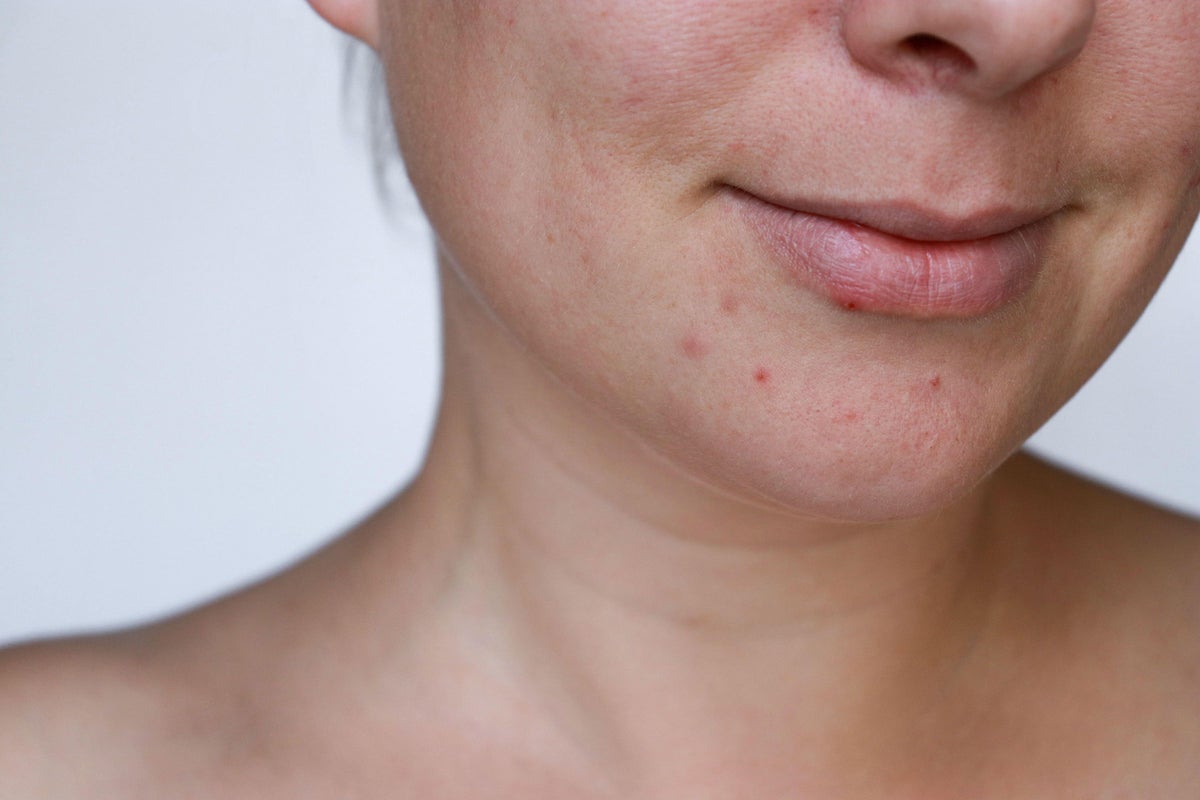
As if dealing with painful, pus-filled spots wasn’t bad enough, often those pesky pimples don’t just disappear completely.
Acne can leave a scar – anything from a faint red mark to a significant dent in the skin. And while some of these residual blemishes fade away fast, others are harder to get rid of, but there are various at-home and clinic options to help diminish the signs of acne and pimple scarring.
Here, dermatology experts talk through the options…
Why does acne cause scarring?
When pores become clogged and infected, a spot forms, leading to inflammation, which is the main cause of acne scarring.
“Because of the injury that occurs with increased inflammation and pus, it causes damage to the dermis [the middle layer of the skin],” says Dr Ifeoma Ejikeme, medical consultant and Kelo-Cote skin ambassador.
“When damage occurs to the dermis, that heals with some form of scarring. Scarring can be red if you’re a lighter skin type, or brown if you’re a darker skin type.”
The amount of inflammation often determines how severe the scar will be. However, genetics can also play a role, as well as other factors.
“It can also be caused by squeezing or picking at the spots,” says Dr Rabia Malik, GP and holistic aesthetic doctor, which is why it’s important to avoid popping your pimples.
“If the way you extract the spot isn’t done properly, you may stress or tear the skin and permanently damage the tissue, leaving behind scarring.”
What are the different types of acne scars?
Acne scarring can generally be separated into two main categories: hypertrophic and atrophic.
“Hypertrophic and keloid scars are thick lumpy scars,” says Malik. “Atrophic scars are flat shallow depressions that are commonly caused by cystic acne.”
There are three main types of the latter, she explains: “Boxcar scars have defined edges that are wide and box-like and are commonly found on the lower cheeks and jaw. Rolling scars vary in depth and make the skin appear uneven. Ice Pick scars are narrow indentations that are commonly found on the cheeks.”
There is a difference between scarring and post-acne pigmentation, however.
“Often people think the pigmentation left behind is also scarring, but technically speaking, it isn’t,” says Dr Christine Hall, aesthetics doctor at the Taktouk Clinic. “It’s the body’s response to having the injury in the skin, and your body produces and sends melanin to the skins surface. It’s the pigment in our skin that also causes us to have a tan.”
Skincare solutions
Finding the most suitable skincare solution for you can depend on your individual needs. When it comes to mild or moderate scarring however, Ejikeme says: “Skincare is definitely the first step.”
She recommends serums and face creams that contain niacinamide or retinoids: “They increase collagen production, they’re more likely to improve the texture of the skin.”
Alpha and beta hydroxy acids, which usually come in serum, gel or liquid form (applied with a cotton pad) can also be effective for skin renewal.
“Ingredients such as azelaic acid, lactic acid and salicylic acid encourage cell turnover and as a result, diminish the appearance of acne scars,” Malik says. “Treatment can vary and some people may need prescription grade medication to treat their acne and thereby prevent scarring.”
Aesthetic treatments
For more severe scarring, you may want to consult your GP, a dermatologist or specialist aesthetic practitioner to discuss possible treatments.
“Microneedling helps to stimulate collagen and smooth out scars,” says Hall. “Laser resurfacing treatments can also be helpful and chemical peels can help remove some of the damaged skin layers.”
Similar to hair removal, ablative laser works by targeting the pigment in the scars and zapping it away. With treatments starting from around £400, it’s a significant investment, however.
“Dermal fillers can be used on atrophic scars to temporarily reduce the appearance of scars that are significantly depressed,” says Malik. Fillers can also be used on pitted scars.
Be sure to seek professional advice to determine the appropriate treatment for different types of scarring.
“Microneedling is not known to work for icepick scars, for example,” says Ejikeme. “And if you have a keloid scar, there are very few lasers that you should be doing because the more you agitate a keloid scar, the more likely that scar is to grow.”
If you have ongoing acne, it’s important to find an effective skincare routine or get medical treatment to prevent further scarring.
“There are lots of things your GP can do to help prevent spots from appearing in the first place,” says Hall. “If you are developing acne scarring, the GP can help or refer you to a dermatologist.”
Getaway scars: 8 super serums and key ingredients to try
1. Purifide by Acnecide Post-Breakout Serum, £14.99, Boots
2. Q+A Niacinamide Daily Toner, £8, Sourcerie
3. Eucerin DermoPurifyer Triple Effect Serum, £12, Boots
4. Glow Hub The Scar Slayer Facial Serum, £14
5. IT Cosmetics Bye Bye Breakout Serum, £22, Cult Beauty (available August 30)
6. E.l.f Cosmetics Youth Boosting Advanced Night Retinoid Serum, £22
7. Kelo-Cote Scar Treatment Gel, £32.18, Boots
8. Teoxane Brightening Night Peel, £59







